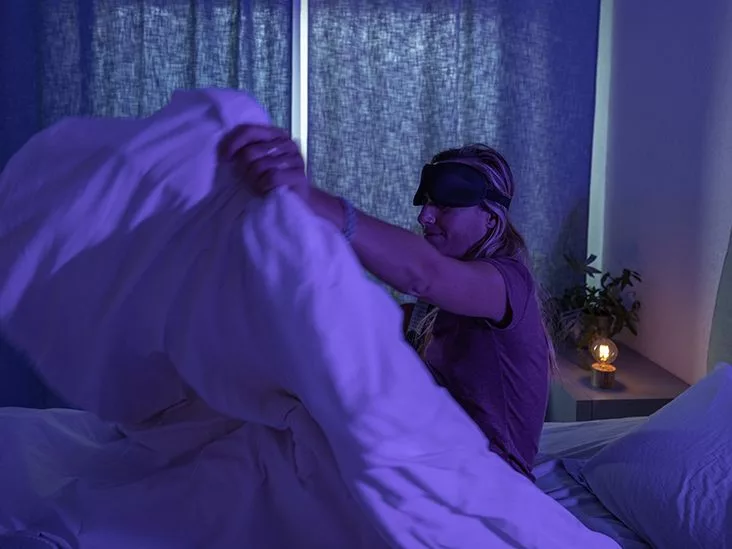Hey there, fellow migraine‑warrior. If you’ve ever rolled out of bed with a throb that feels like a drum solo in your skull, you know how frustrating the night‑to‑morning transition can be. The good news? A lot of that “morning migraine” can be traced back to what you do after the sun goes down. Below you’ll find a friendly, step‑by‑step nighttime routine that many people with migraine swear by. It’s not a magic pill—just a collection of migraine sleep tips that are easy to sprinkle into your evening, and they only take about 15‑20 minutes to set up.
Why Evening Matters
What the science says about the sleep‑migraine link
Research shows that sleep and migraine are in a two‑way street. Poor sleep can trigger an attack, and an attack can wreck your sleep. A review in Headache Journal notes that disrupted sleep patterns, especially irregular bedtime, are among the top triggers for chronic migraine sufferers. In other words, fixing your bedtime habits can be a solid piece of the headache prevention routine puzzle.
How poor sleep hygiene triggers attacks
When you stay up late or toss and turn, your brain’s pain pathways become overly sensitive. Over time, this sensitization can lower the threshold for a migraine, meaning even a tiny stressor can set off a full‑blown headache.
Key stats to remember
| Finding | Source |
|---|---|
| Up to 80 % of chronic migraineurs report sleep problems | American Headache Society |
| Evening meals < 4 hrs before sleep increase disrupted sleep risk | 2021 study |
| Blue‑light glasses reduced headache days by 30 % in a small trial | 2022 study |
Core Routine Steps
How far before bed should I eat?
Give your digestion a breather. The American Migraine Foundation recommends at least four hours between dinner and lights‑out. If blood‑sugar dips are a known trigger for you, a tiny snack—think a banana with a spoonful of almond butter—about 30 minutes before bedtime can keep that dip at bay.
Should I limit fluids at night?
Last‑minute bathroom trips can shatter even the deepest sleep. Aim to finish most of your fluids at least two hours before you plan to turn off the lights. Keep a glass by your bedside for a quick sip if you’re thirsty, but keep the big gulp for earlier in the evening.
Is a warm shower good or bad?
A warm shower or bath 1–2 hours before bed can melt muscle tension, lower stress hormones, and improve circulation—great for many migraine‑prone folks. However, if heat has ever set off a flare for you, skip the hot water and try a gentle stretch routine instead (see the “Alternative” box below).
Alternative: Gentle Night‑time Stretch
Spend five minutes doing slow neck rolls, shoulder shrugs, and a few cat‑cow moves on a mat. These motions loosen tight muscles without the heat exposure that could trigger some people.
How does screen time affect migraine?
Blue light from phones, tablets, and laptops tricks your brain into thinking it’s still daytime, delaying melatonin release. A small 2022 study found that people who wore blue‑light‑blocking glasses after sunset reported fewer headache days. If glasses aren’t your jam, simply put devices on “night mode” and shut them off at least 60 minutes before sleep.
What room conditions are ideal?
Think of your bedroom as a sleep sanctuary. Aim for a cool temperature—around 18‑20 °C (65‑68 °F), keep it dark with blackout curtains, and mute stray noises with a white‑noise machine or a fan. A supportive pillow that keeps your neck in neutral alignment can also prevent tension headaches that sneak up during the night.
What calming activity works best?
Wind‑down rituals signal to your brain that it’s time to shift gears. My go‑to is a five‑minute guided meditation on the Calm app, but a simple breathing exercise—inhale for four seconds, hold for seven, exhale for eight—does wonders too. Just avoid high‑energy podcasts or thrilling TV shows that can keep your adrenaline humming.
Why stick to the same bedtime?
Consistency is the secret sauce. Going to bed and waking up at the same time—even on weekends—helps regulate your internal clock. The Everyday Health guide notes that irregular sleep schedules can increase migraine frequency by up to 25 %.
Migraine Sleep Tips Checklist
Stick to a regular schedule
Set a “sleep alarm” for your bedtime—yes, it sounds odd, but treating bedtime like a meeting can keep you honest.
Limit caffeine and alcohol after noon
Dr. Christine Lay from the University of Toronto reminds us that caffeine can linger in the system for up to six hours, so it’s safest to stop after early afternoon.
Create a screen‑free zone
Turn off the Wi‑Fi router, move phones to another room, and use a small sleep‑cycle app to enforce the screen‑free period.
Personalizing the Routine
Identify your own triggers
Grab a notebook and jot down what you ate, when you slept, and any stressors for a week. Patterns will pop up—maybe it’s cheese, maybe it’s the late‑night workout.
When to skip a step
If a warm shower makes you feel light‑headed, replace it with a cool foot soak. If blue‑light glasses feel uncomfortable, stick to the “no screens” rule and use a red night‑lamp instead.
Medication timing matters
Many preventive meds work best when taken a couple of hours before sleep, allowing your body to metabolize them while you’re still awake. Always check with your doctor, but a simple tweak like this can pack a big punch.
Case study: Emily’s 30‑day experiment
Emily, a 34‑year‑old graphic designer, tried the full routine for a month. She reported a 40 % drop in morning migraine days and felt more rested overall. Her secret? Consistently keeping dinner at 6 pm, a 10‑minute stretch after a lukewarm shower, and a lavender‑scented pillow spray.
Expert Insights & Evidence Base
Study on meal timing
A 2021 investigation showed that participants who ate their last big meal at least four hours before bedtime experienced 22 % fewer sleep disruptions according to the study.
Blue‑light and headache days
The same year, a small clinical trial found that nightly use of blue‑light‑blocking glasses cut the average number of headache days from 6 to 4 per month according to the research.
Melatonin’s role
Melatonin isn’t just a sleep hormone; it also has antioxidant and anti‑inflammatory properties. Dr. Lauren Natbony of Integrative Headache Medicine of New York notes that melatonin supplements have shown promise as a preventive tool for chronic migraine according to a Migraine Again overview.
Suggested citation format
When you write your own migraine diary or share tips with a community, you can reference these sources like: (American Migraine Foundation, 2024) or (Healthline, 2021).
Common Pitfalls & How to Fix Them
Napping too much
Limit daytime naps to 20‑30 minutes and finish them before 3 pm. Longer or later naps can push your night‑time sleep later, scrambling your internal clock.
Late‑night caffeine/energy drinks
Swap that midnight espresso for a calming herbal tea—chamomile, valerian, or even warm milk if you’re not lactose‑intolerant.
Over‑hydration
Set a timer for your evening water intake. Finish the bulk of it by 8 pm, then sip only as needed.
Inconsistent bedtime
Use a gentle alarm on your phone to remind you when it’s “lights‑out time.” The cue can be a soft chime, not a blaring ringtone.
Quick‑Start Nighttime Migraine‑Relief Checklist
- Finish dinner ≥ 4 hrs before bed.
- Enjoy a small, low‑glycemic snack if needed.
- Stop large fluids 2 hrs before sleep.
- Take a warm shower or stretch 1–2 hrs before lights‑out.
- Turn off screens ≥ 60 min prior; consider blue‑light glasses.
- Set bedroom temperature to 18‑20 °C, dark, quiet.
- Do a 5‑minute relaxation ritual (meditation, breathing).
- Go to bed at the same time each night.
Conclusion
Putting together a migraine nighttime routine isn’t about sweeping life changes; it’s about tiny, consistent tweaks that add up. When you give your body the right cues—balanced meals, controlled fluids, gentle warmth, reduced light, and a calm mind—you’re essentially telling your brain, “Hey, it’s safe to unwind, no need to fire up the pain alarms.” Give this routine a solid 30‑day trial, log how often you wake up headache‑free, and adjust any step that feels off for you. You’ll likely notice not only fewer migraine mornings but also a brighter, more energized you.
Got questions or want to share how the routine works for you? Drop a comment below or join our migraine‑support community. Together we can turn those restless nights into restorative sleep—and keep the migraine monster at bay.


















Leave a Reply
You must be logged in to post a comment.